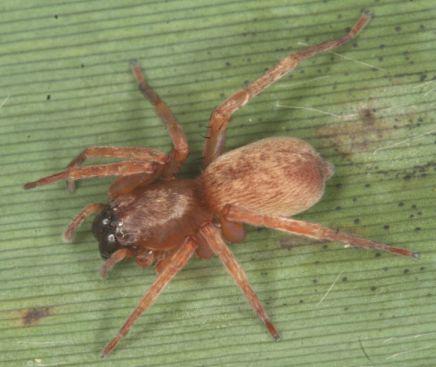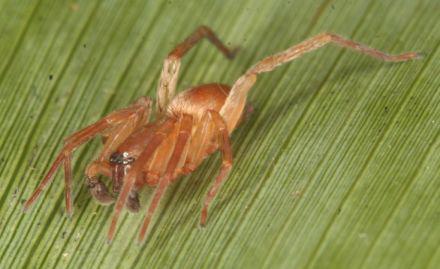
Down But Not Out: Rare Wetland Spider Not Extinct

A rare wetland spider missing in action for 10 years and feared extinct is back.
An entire colony of the fuzzy brown spiders, called Rosser's sac spiders, was uncovered in Chippenham Fen, a nature reserve in Cambridgeshire, England. The discovery was announced by the conservation group Buglife.
Rosser's sac spiders (Clubiona rosserae) are elusive critters . They have been spotted in only two places in Britain since their discovery in the 1950s. Before the new sighting in September, and the colony discovery in mid-October, these spiders have been overlooked since 2000. The first photographs of live Rosser's sac spiders, both a male with large palps a pair of short limbs in front of the legs, used during sexual intercourse in adult spiders and a female, were taken by Peter Harvey, who took part in the second survey.
"I was extremely surprised to find the first one and then when we went back a month later it was great to find more of them," said Ian Dawson, who spotted the camera-shy spider. "If we've managed to find 10 of them, I think there must be quite a sizeable population of Rosser's at that particular site."

Finding these spiders is usually easy just look for the spider in the leaf sleeping bag.
"Rosser's sac spiders spend their days hidden in tubular silken retreats, often in a folded leaf, a bit like a sleeping bag," said Mike Taylor of Natural England, which manages the Chippenham reserve. "It's a member of the Clubionid family of spiders who like to hunt their prey rather than catch them in a web. We were delighted that they have been spotted recently."
The Rosser's sac spider prefers wetland areas, but its homelands have been disappearing over the years.
Sign up for the Live Science daily newsletter now
Get the world’s most fascinating discoveries delivered straight to your inbox.
"This spider is globally endangered," said Matt Shardlow, chief executive of Buglife."It's fantastic that it's still creeping around in the British countryside and we're ecstatic that people can now see what it looks like for the first time in history."










